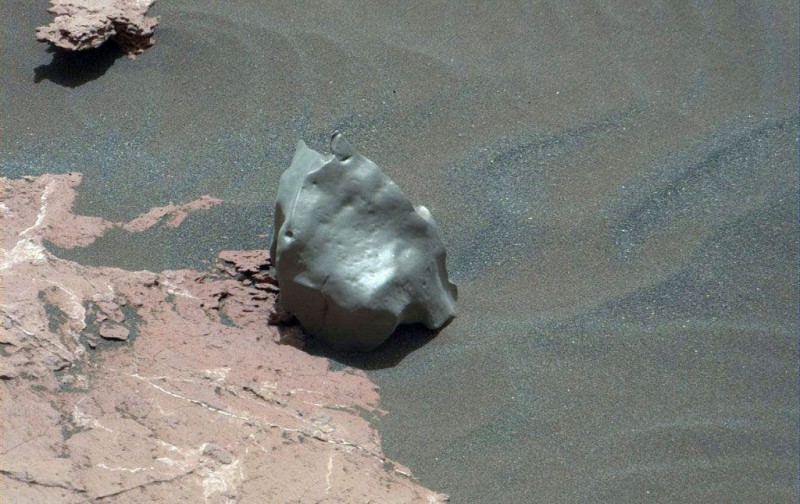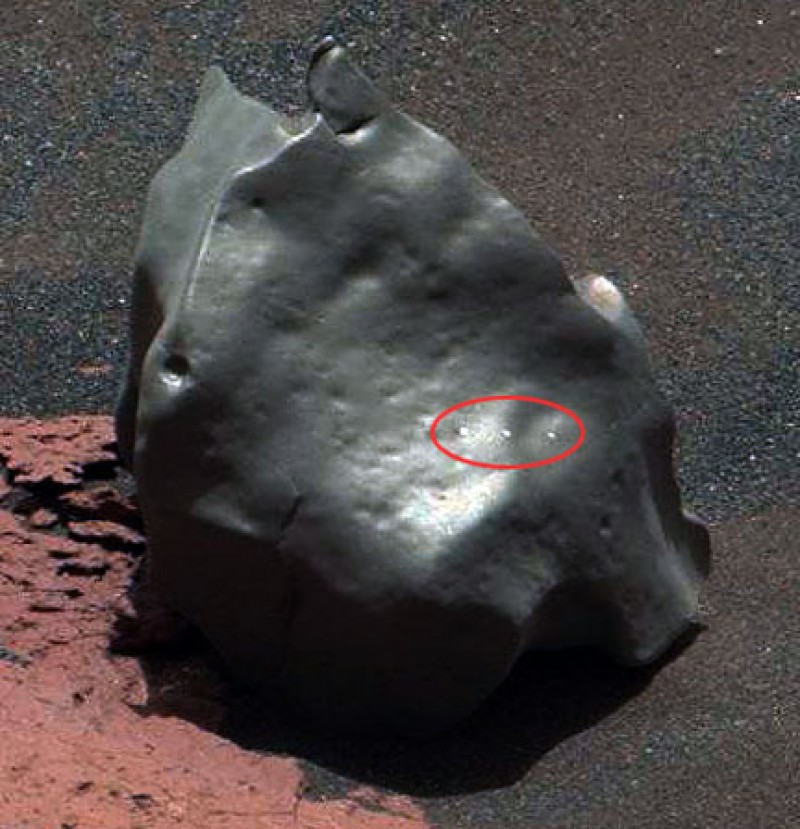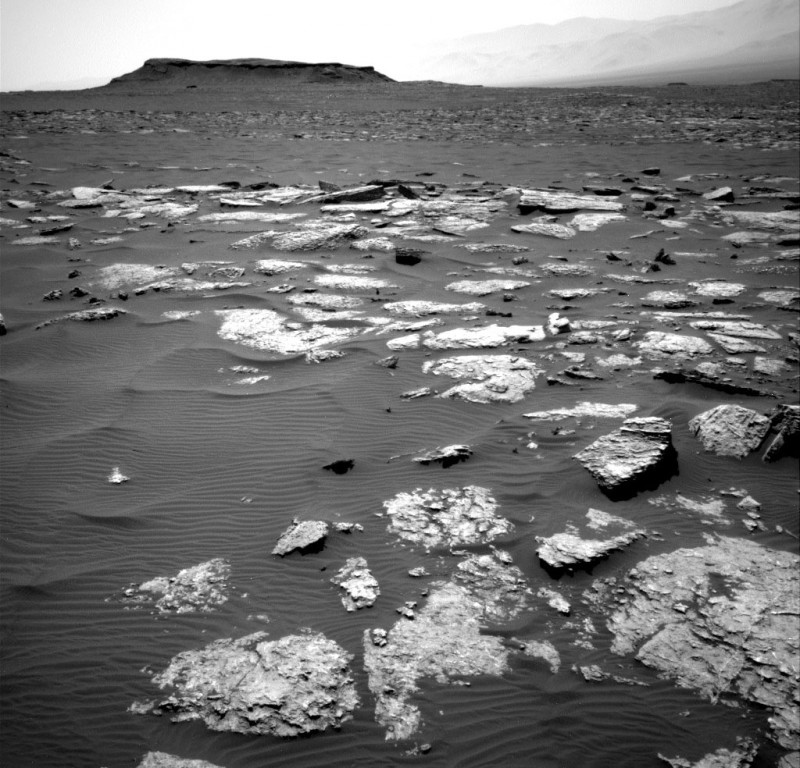 |
By Bob King, Universe Today
Rolling up the slopes of Mt. Sharp recently, NASA’s Curiosity rover appears to have stumbled across yet another meteorite, its third since touching down nearly four and a half years ago. While not yet confirmed, the turkey-shaped object has a gray, metallic luster and a lightly-dimpled texture that hints of regmaglypts. Regmaglypts, indentations that resemble thumbprints in Play-Doh, are commonly seen in meteorites and caused by softer materials stripped from the rock’s surface during the brief but intense heat and pressure of its plunge through the atmosphere.
 |
| Oddly, only one photo of the assumed meteorite shows up on the Mars raw image site. Curiosity snapped the image on Jan. 12 at 11:21 UT with its color mast camera. If you look closely at the photo a short distance above and to the right of the bright reflection a third of the way up from the bottom of the rock, you’ll spy three shiny spots in a row. Hmmm. Looks like it got zapped by Curiosity’s ChemCam laser. The rover fires a laser which vaporizes part of the meteorite’s surface while a spectrometer analyzes the resulting cloud of plasma to determine its composition. The mirror-like shimmer of the spots is further evidence that the gray lump is an iron-nickel meteorite.
Curiosity has driven more than 9.3 miles (15 km) since landing inside Mars’ Gale Crater in August 2012. It spent last summer and part of fall in a New Mexican-like landscape of scenic mesas and buttes called “Murray Buttes.” It’s since departed and continues to climb to sequentially higher and younger layers of the lower part of Mt. Sharp to investigate additional rocks. Scientists hope to create a timeline of how the region’s climate changed from an ancient freshwater lake environment with conditions favorable for microbial life (if such ever evolved) to today’s windswept, frigid desert. NASA’s Opportunity rover found five metal meteorites, and Curiosity’s rumbled by its first find, a honking hunk of metallic gorgeousness named Lebanon, in May 2014. If this were Earth, the new meteorite’s smooth, shiny texture would indicate a relatively recent fall, but who’s to say how long it’s been sitting on Mars. The planet’s not without erosion from wind and temperature changes, but it lacks the oxygen and water that would really eat into an iron-nickel specimen like this one. Still, the new find looks polished to my eye, possibly smoothed by wind-whipped sand grains during the countless Martian dust storms that have raged over the eons. Every time a meteorite turns up on Mars in images taken by the rovers, I get a kick out of how our planet and the Red One not only share water, ice and wind but also getting whacked by space rocks. |
 |